MEP rangers have been busy responding to human-elephant conflict in July, re-training rangers on the WILD app in August and deploying new teams to poaching hotspots in September.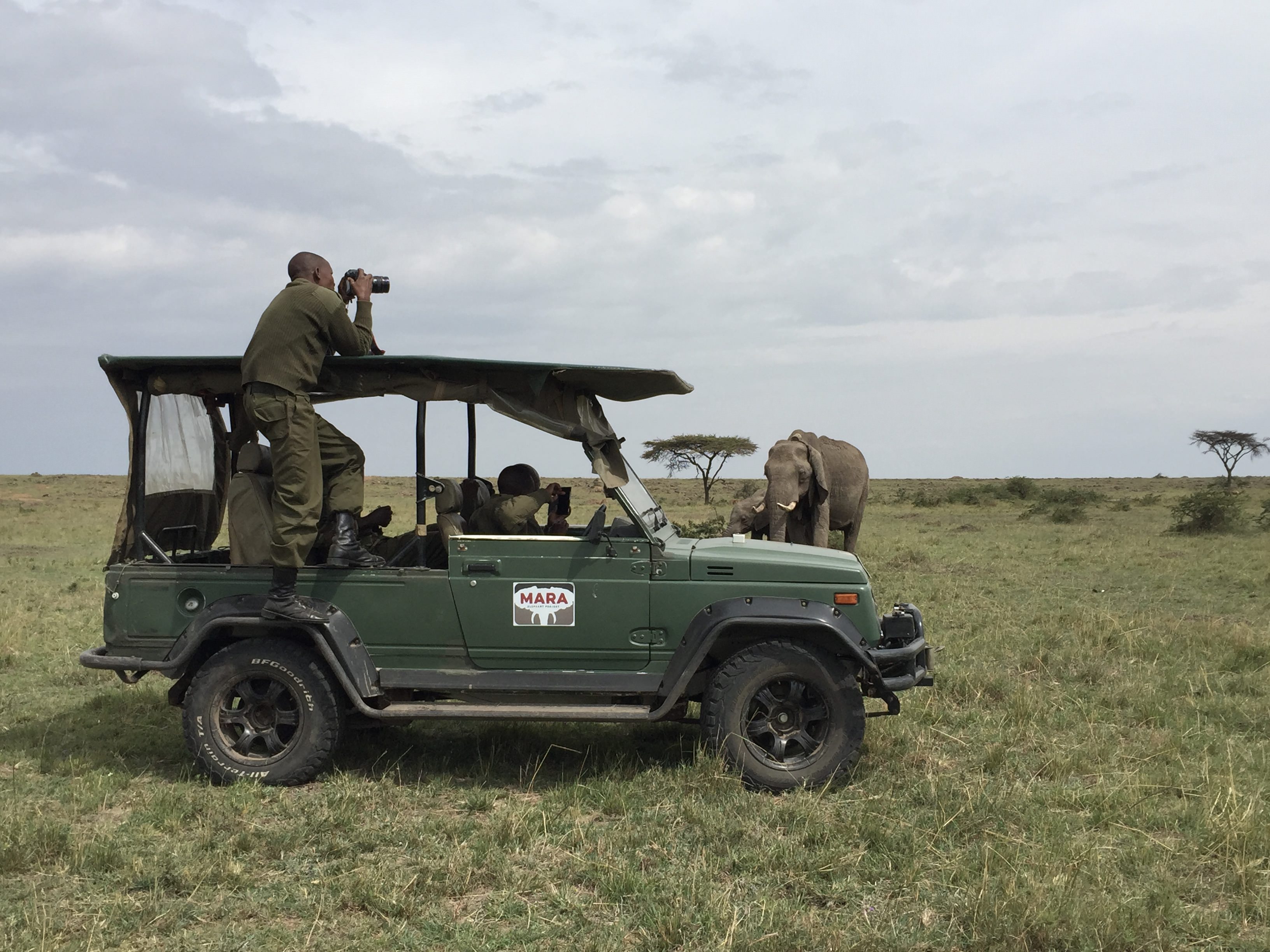
Rangers viewing Courtney shortly after she was treated in the Musiara area.
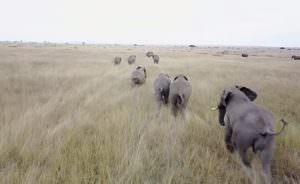
In July, we established a new ranger base in Isokon Transmara in response to large herds of elephants that have been moving up the escarpment from the protected area though corridors, which are easier to climb. We were chasing elephants out of farms nearly every night for two months. MEP’s CEO Marc Goss joined our efforts to keep the Karen Blixen Camp Ree Park Safari helicopter close by in order to conserve flying time and increase response time during this difficult HEC mitigation period (pictured right pushing elephants to safety).
In the Munyas area, elephants have been using the Laila Forest as a staging area to move into the farming area at night around settlements in the area. MEP linked two existing electric fences with chili fences. The ranger team stationed in Laila, and the chili fence we erected in this area, were effective in stopping them. Unfortunately, a bull herd was caught during the day in the farming area and one bull was killed by a spear. The farmers were very grateful for our presence and gave the team maize and goats to eat as a thank you.

MEP rangers putting up the much needed chili fence.
MEP also had a few notable arrests in July including one suspect that was arrested in Loita with 32 kg of ivory and the second in Tanzania where Tanzania National Parks (TANAPA), following MEP intelligence, arrested three suspects with 46 kg of ivory and two firearms. This area is adjacent to Loita Hills on the Tanzanian side of the border thus reinforcing our concern for elephant security in the area. We have stopped poaching in most areas of our operation, but in Loita where we have had little presence, poaching is still an issue. We have not been able to extend our area of operation permanently into the Loita area due to a lack of resources and with the thick cover and lack of access roads it makes it easy to miss poachers and even elephant carcasses.
MEP sent the rapid response unit to Loita in July and again in September, where they were responsible for following elephants, arresting illegal loggers, gathering intelligence from the community and informants and responding to conflict. This team consists of four MEP rangers, two Narok County Government rangers and two Kenya Wildlife Service (KWS) rangers. Their job is to patrol the area and respond when needed. They move every two weeks in order to patrol the large area.
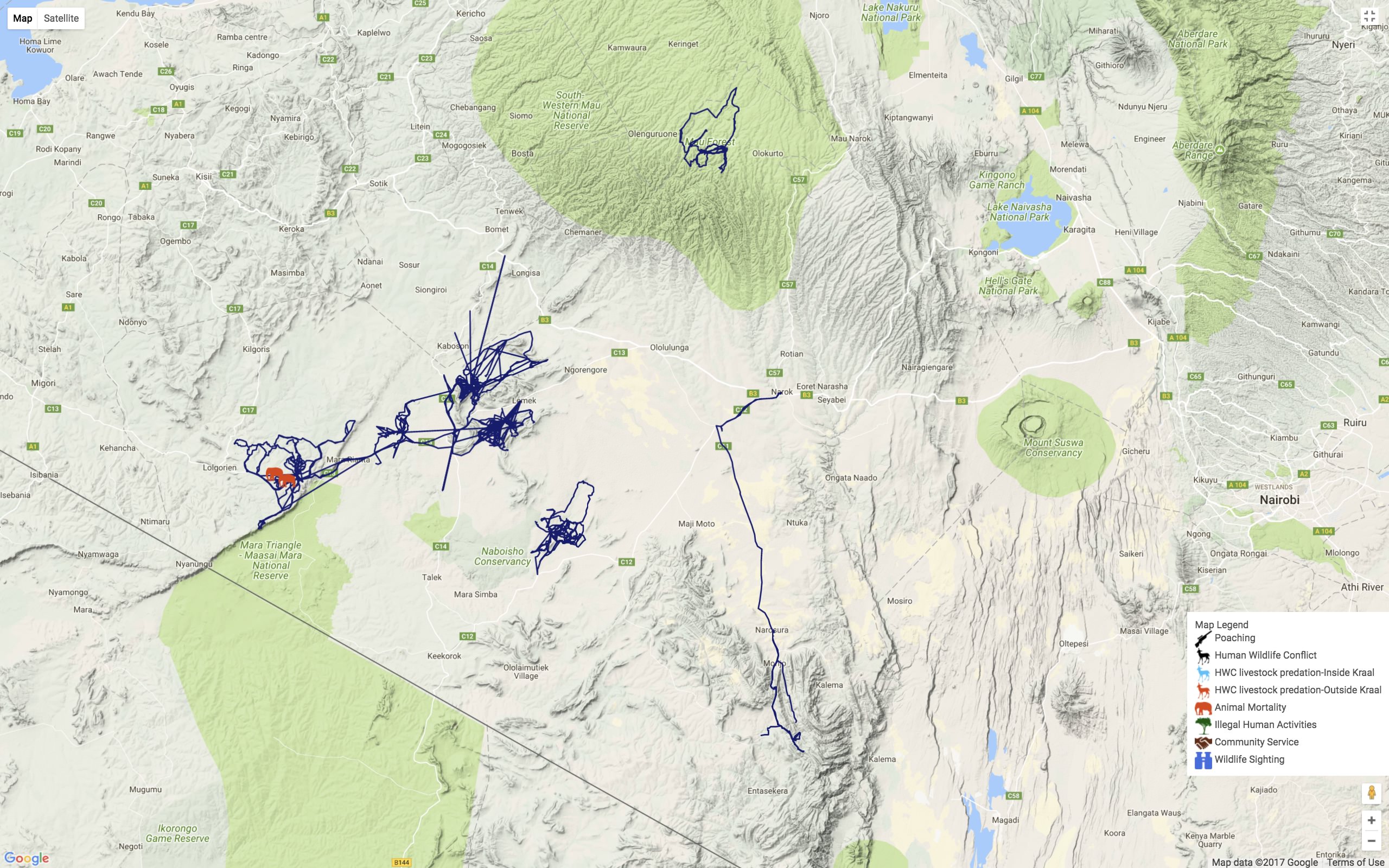
The map illustrates the main concentration of our patrol teams and the reconnaissance team’s tracks in Loita and Mau Forest.
On the 6th of July we received an intelligence report of suspects with four pieces of elephant ivory to sell in the Ilkerin area of Loita. The same afternoon we deployed the MEP-KWS rapid response team from MEP HQ to lure out the ivory dealers and arrest them. Two suspects turned up at the open plain rendezvous with their ivory. Three of our team members approached them over the open ground on a motorbike. As soon as they met up they made the arrest. Unfortunately, one got away. The team gathered some good intelligence from the suspect at the KWS HQ in Ewaso Ngiro.
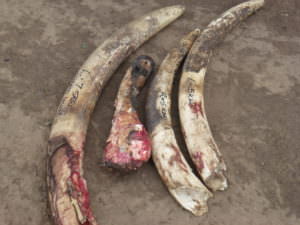 As the tusks were quite fresh we suspect they are from two of the poached elephants in Loita at the beginning of the year. During the second operation we attempted to lure out a renowned poacher who is using a .375 caliber hunting rifle to kill elephants. During this operation the suspect became very cagey and fled the scene leaving 13 kilos of ivory with the informant. The Loita team also stopped two illegal logging outfits and recovered a large amount of podocarpus timber, which was donated to the local primary school under the authority of KWS to be used for fencing.
As the tusks were quite fresh we suspect they are from two of the poached elephants in Loita at the beginning of the year. During the second operation we attempted to lure out a renowned poacher who is using a .375 caliber hunting rifle to kill elephants. During this operation the suspect became very cagey and fled the scene leaving 13 kilos of ivory with the informant. The Loita team also stopped two illegal logging outfits and recovered a large amount of podocarpus timber, which was donated to the local primary school under the authority of KWS to be used for fencing.
After the second Loita operation we sent the rapid response unit for two weeks to the Mau Forest where they were based near the edge of the forest in the northeastern section otherwise known as Olengurone. The main reasons for sending this team into Mau was to find and follow the elephant herds and choose an adequate site for collaring a new candidate; follow any poaching signs and work with local intelligence; respond to HEC in the Olengurone settlement area; and record illegal logging and map logging trails.
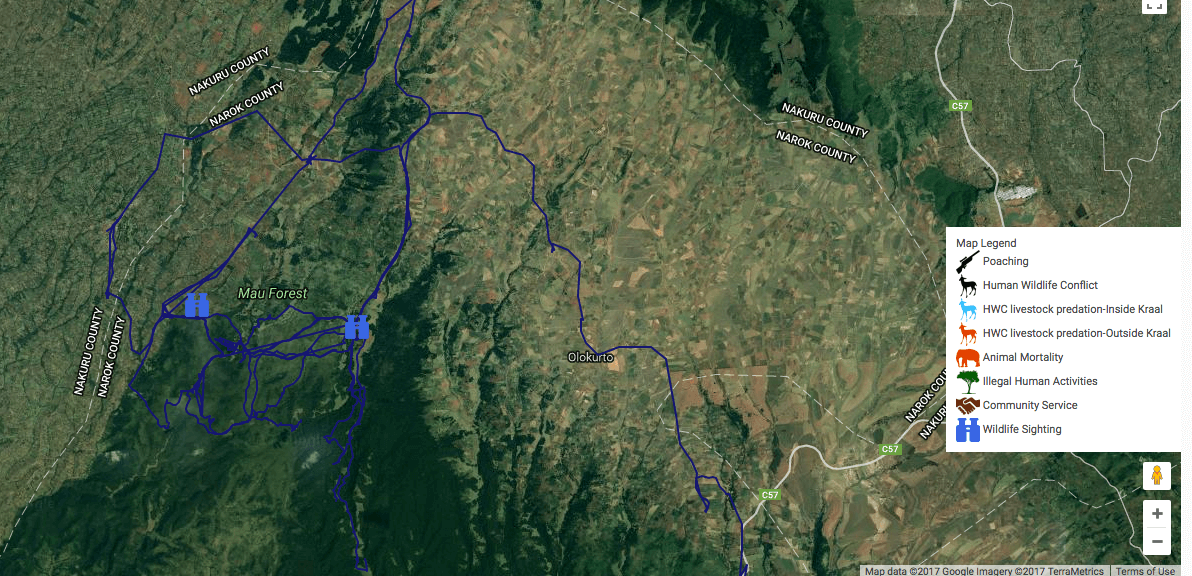
The Mau team’s recorded steps and findings.
The Mau team found three herds of elephants in the Olengurone area consisting of around 30 individuals in total. It is not easy to keep up with the elephant herds in the thick forest but the area where the team found the elephants has various openings and there is a good chance of collaring. The team reacted to four bulls crop raiding and followed several breeding herds into the forest who were very skittish. The team hired donkeys to penetrate further into the forest to follow the elephants. The single biggest issue the rangers reported was the high human activity, logging and illegal grazing, deep in the forest.

The Mau unit traversing the forest.
In August and September with less human-elephant conflict to respond to MEP started a new fence monitoring team made up of two rangers with a motorbike and a GPS. Their job is to systematically move from the most northern extent of the ecosystem east to map fences in the Olkinyei and Maji Moto areas. This information is critical to spatial planning and identifying where wildlife corridors are being blocked. Once this area is covered we will move south to cover the Siana and Loita areas.
Additionally, all rangers were re-trained on the WILD app and were notified that their performance will be measured using WILD app reports. Previously, MEP rangers have been recording MIKE (Monitoring of Illegally Killed Elephants) and HEC data manually with text message updates sent daily to HQ via mobile phones. They were also submitting a monthly written report that was recorded daily in the field using a patrol book with photographs and patrol tracks that were recorded by GPS and downloaded every two weeks. What MEP found was that this system wasn’t working. Extracting the necessary information form the six books, patrol logs, cameras and GPS was an extremely time consuming process and left large margins for error.

Showing a fellow MEP ranger how to properly use the WILD app.
The solution to the above complicated procedure was the implementation of WILD, a mobile application designed to improve the collection, sharing, management and analysis of ranger data. MEP has been using the WILD app since its inception in 2016 and with this we have been able to quantify ranger patrol distances and improve daily reporting of the ranger teams to HQ. Daily use of the smartphones and populating the WILD app patrol reports was not happening as frequently as we would have liked.
During the staff meetings and refresher courses we reiterated the importance of data collection though the WILD app and its ability to monitor ranger performance. All ranger stations are now recording data daily on their smartphones and sending to HQ every evening. This data collection is what guides us to directing our resources to the areas it’s needed most.
In July, I trained rangers from multiple conservancies on how to use the WILD app. I attended an intelligence training on handling informants. Additionally, MEP is happy to announce MEP one of our rangers was promoted to sergeant in the intelligence unit.
As the crops ripen and MEP rangers face another harvest season coming in November, we need your support now!


